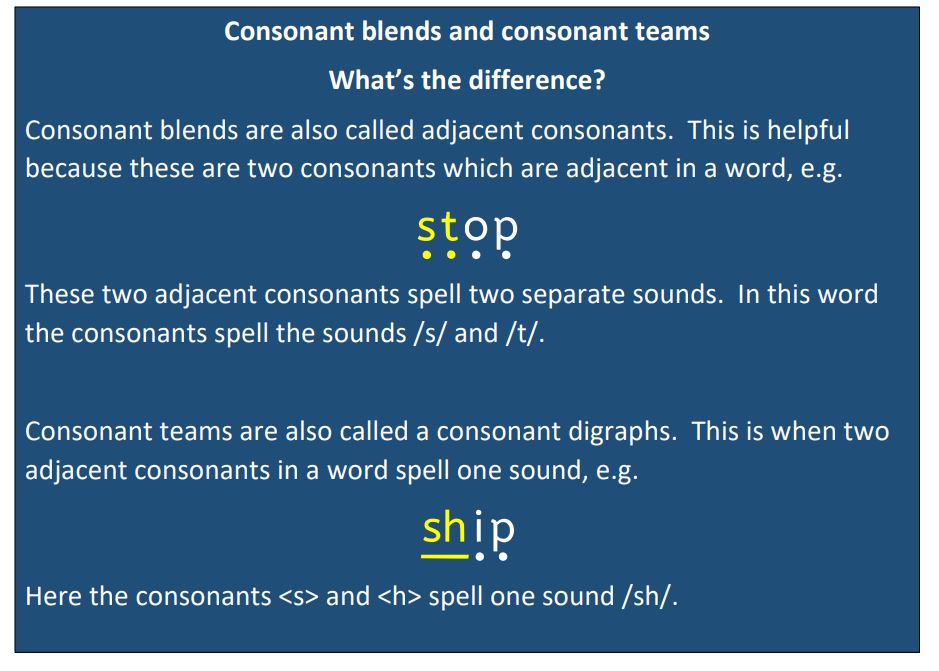Many of the terms in phonics are quite confusing. Consonant blends and consonant teams are such terms. So, what is the difference between the two?
A consonant blend is a term used for two adjacent consonants in a word that represent two separate sounds. Take the word, ‘blog’: the letters ‘b’ and ‘l’ spell two separate sounds /b/ and /l/. The term ‘consonant blend’ is not ideal because we now use the word ‘blend’ as a verb, ‘to blend’, when we describe how the reader pushes sounds in a word together to read a word. That is why I prefer the term ‘adjacent consonants’ to ‘consonant blends.’ Adjacent consonants is clearer: two consonants side by side and separate from one another. Adjacent consonants can appear at the end, the beginning and both ends of a word. Many kids have difficulties reading words with adjacent consonants as they are present in words with 4, 5, and 6 sounds, e.g. camp, stop, crust and sprint They will need extra practice reading these words. For beginner readers, adjacent consonants are difficult to blend!
A consonant team is when two adjacent consonants in a word spell one sound. Take the word ‘shed’. The letters ‘s’ and ‘h’ spell the sound /sh/. Another term for a consonant team is consonant digraph. Digraph means two letters that spell one sound. Why do we have consonant digraphs (teams)? Our alphabet has 26 letters and roughly 44 sounds (depending on pronunciation), so to make up spelling representations for the additional sounds, new letters combinations were needed. The most common consonant digraphs that beginner readers learn are: sh, ch, th, ck, and ng.
Why is it important to use and teach the correct terms?
The English Alphabetic Code is very complex and, as teachers, we need to be very explicit in how we teach it. When reading a word with adjacent consonants we can point to each letter separately to indicate that these are separate sounds. But when we are reading a word with a consonant team (digraph) we need to show the reader that these two letters spell one sound. This will help him/her map and read the word correctly and it will help him/her to use this knowledge next time he sees this combination of letters.


